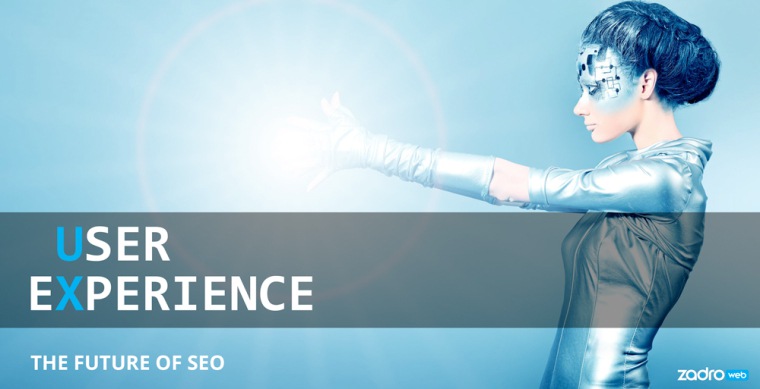
The SEO landscape has undergone quite a few changes over the last few years. You don’t need me to elaborate much here. Google has reshaped the SEO landscape and, like it or not, where Google goes others follow. Well, most do.
Search engines have increasingly emphasized user experience, relegating many of the traditional SEO techniques and strategies to a merely supportive role. I mean, they’re even writing our search queries with Hummingbird. As frustrating as it may be to always chase a moving target, it’s not necessarily a bad thing.
When it comes down to it, we all want the same thing – to attract visitors to our websites and convert them into customers. Right?
To do that effectively, you need more than lines of cleverly constructed code. You need to create an experience that draws people in, piques their interest, addresses their needs and concerns, and finally, compels them to convert.
In short, you absolutely need to create a unique and satisfying UX for your visitors.
But What About All that On-Page SEO?
It’s a fair question. I am in no way suggesting that anyone ignore the nuts and bolts of on-page SEO.

Your keywords, images, meta data, and tags are the foundation of your website, and as such, will always be an important part of your SEO strategy. However, this has become an assumed baseline for all SEO now.
As the internet continues to evolve, on-page optimization will simply be the engine that drives the user experience.
Think of your website as a Maserati. On-page SEO is the engine and infrastructure of your stylish automobile. Without it, that car is just another fancy chassis up on blocks. However, what really attracts the buyers is the Maserati’s sleek style, luxurious appointments, and century old reputation (brand). No one is looking to buy a Maserati engine hidden under the hood of a burned out old Chevy.
Make sure you have all those on-page components in place and run it through an SEO Auditor, but then get back to your visitors and their experience of your brand as top priority.
UX and Your Website Design
Great UX begins with a great website design. There’s a reason major sites like Amazon and Ebay redesign their websites on a regular basis. They are responding to the needs of their users. It’s no longer enough to simply have a website live and online. Quite honestly, it’s never been enough. It has to be responsive, intuitive, and inviting.
Remember, the purpose of your website is to connect with people and your customers, not search engines and robots.
If your website is unattractive and difficult to navigate, you are going to see more bounces than conversions. Online users may have become more savvy over the years, but they have also become more impatient. Present a clumsily designed website that makes no concessions to the user’s experience, and you will be playing a losing game. What else can you do? First off, ask your friends, employees, or customers where their pain points are on your site and go fix them.
After that, you can use sites like User Testing to get unbiased opinions for how your visitors see and experience your site. Or, ramp up A/B testing efforts using a site like Unbounce.
The Virtual Storefront
Online retailers have always talked about the “virtual marketplace”, but few of them have ever fully embraced the idea. Most have been content to hide behind their website, letting it do the talking.
As UX takes on greater value, it is important to give a face and personality to your website. Visitors want to know who they are doing business with, and that means you and your team have to come out from behind the curtain.
Shine a light on your star employees. Let your visitors see who they are dealing with, and personalize your site with photos and stories about yourself and your staff.
For instance, have you ever browsed the about page on Moz? Check it out. You can get to know their culture and employees very well. They do an awesome job at telling their story. Seriously, get your employees on your website. Don’t have any employees? Make your “about” page about YOU…get personal with how you got into your business and tell your story. People will appreciate it.
The Stories You Could Tell
We’ve all been taught the value of blogging for SEO. That steady stream of content presents highly effective optimization opportunities. But it can, and should, do much more.
To enhance your website’s UX, you need to engage with your visitors. The company blog can be a perfect venue to do just that. Regular blog posts give you the opportunity to speak directly to your current customers, and to woo new ones. And, don’t let the word “blog” throw you off. This needs to be a full-blown content marketing effort.
Talk about growing trends in your industry, and demonstrate that you have your finger on the pulse of the happenings in your niche. Inject some personality into your content, and try to relate to your customers on a more personal basis. Don’t be shy. The one thing that will always interest people is other people.
Make sure you create value and take the time to craft engaging posts. We’ve all created content for the sake of content. We’re all getting tired of it. Make 2015 the time you get serious with your content.
Not sure where to start? Take a look at this post on skyscraper content by Brian Dean.
How To Measure UX
This can be tricky from an ROI standpoint, but there are clues to measure user experience.
Bounce rate is a big one. If it is high, try to answer “why?” Is your content engaging enough? Are there other relevant posts or pages they can visit to learn more?
Time on site goes hand in hand with bounce rate. If there’s a longer average session time, then a higher bounce rate might not be so bad. Conversion is another one. What do you want your visitor to do next? Is there a clear call to action on the page?
Hold your visitors’ hands through the entire “experience” of your website and constantly analyze your goals!
What’s Next?
Google can measure user experience as a factor in its ranking signals. Focusing on your visitors and considering their online experience is critical to your SEO success.
Social media is another way to help shape user experience on your site. How? Answer your customers questions in real-time and show them you’re listening.
Responsive design and page speed. Enough said.
Do your visitors want more? Are you capturing their email addresses and sending them updates? Email marketing continues to rank the highest for of ROI among digital channels. Not to mention, this will eventually create more brand advocates and drive UGC (user-generated content) with testimonials and comments…which equals social proof and a more trusted experience on your site.
SEO is so much more these days, and we all know that by now.
[“source-searchenginejournal”]

